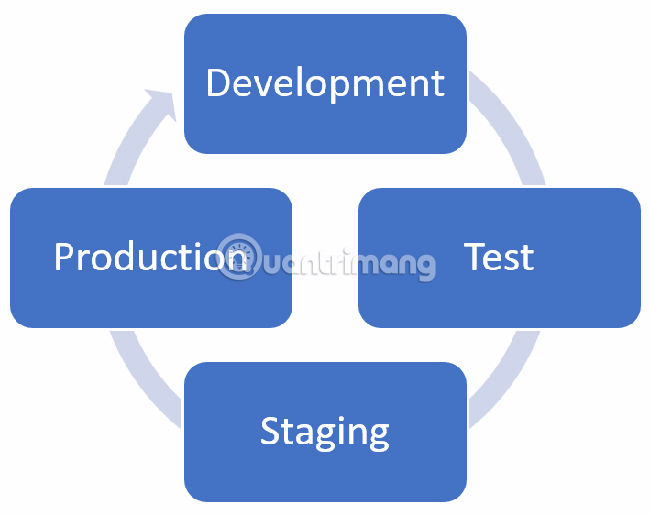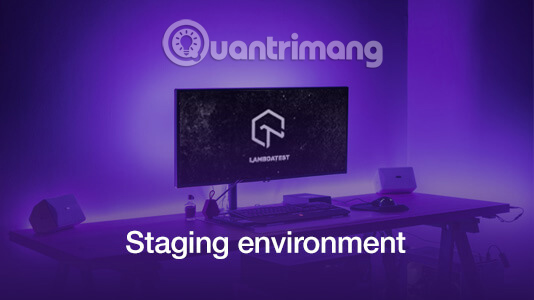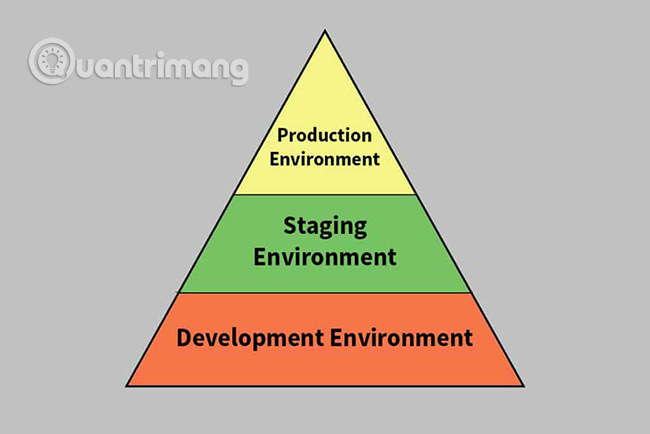What is the staging environment?
The staging (stage) environment is an exact replica of the production environment for software testing. The staging environment was created for code testing, builds and updates, to ensure quality in the same production environment before deploying the application.
The staging environment requires a copy of the same hardware, server, database and cache configuration. Everything in the staging environment must be as similar to the copy in the production environment as possible, to ensure the software works correctly.
Learn about staging environments
- The importance of staging environments
- Tests in staging
- Restrictions of staging environments
- Alternatives to staging
The importance of staging environments

The steps to deploy software include development, integration, testing and QA (quality assurance), staging, manufacturing. Finding software errors is very important for performance. The experimental staging environment is at a level similar to the real production process, in a non-production environment and can make users more confident about using software when producing.
The staging environment conducts tests that prevent many problems in production, causing poor performance for end users. Once the application is deployed into the production environment, there are fewer things that need to be repaired.
Tests in staging

Smoke Testing (incomplete software analysis, determines that the most important functions of the program work but does not go into details) and User Acceptance Testing (UAT - a software development stage in which Software tested in the "real world" by the intended audience) can be implemented in staging environments. Smoke Testing tests essential service functions and UAT is done from an end user's perspective.
For example, if the new build goes through development and integration, smoke testing can confirm that the main functionality is still working properly and testing UAT can guarantee quality from the user's point of view. Tests are performed in a staging environment because if there is a big flaw and the system is broken, the production environment will not have to stop working.
In addition, chaos engineering tests (the process of examining a distributed computer system to ensure that the system can withstand unexpected interruptions in functionality) can also be performed in staging environments. Chaos engineering reinforces trust in the system, by constantly trying to attack code. Chaos engineering is often done in production. However, it is possible to start chaos engineering in the staging environment, before testing in production. Chaos engineering can help identify potential problems that may occur with software in a production system.
Staging environments can be easily created in cloud computing, deployed in a production environment. This can help automate Continuous Delivery processes (an approach to software release, in which development teams create and test code in short cycles).
Restrictions of staging environments
Although the staging environment provides additional quality assurance in a system, it still has limitations. Even if the staging environment replicates how good the production environment is, there are still scenarios that it cannot imitate. For example, it can be extremely difficult or impractical if you want to copy high traffic to test the application in a certain condition.
If the staging environment is built incorrectly or poorly used, it can cause more problems. If the configuration of both staging and production environments does not match, the data collected from the replicated tests will be inaccurate. Unrecognized defects are likely to be introduced into the production environment. For example, code must be stored in the same way both in the staging environment and in the production environment. If that is not guaranteed, the result of checking latency (latency) may vary.
Testing in a staging environment for a limited time can create other problems. Problems such as data corruption or memory leaks need more time to display.
Alternatives to staging
Some companies choose to completely skip the staging phase. Large amounts of data can be taken from the production environment, including information that cannot be obtained through staging, such as traffic volume. If you use data from the production environment to create and maintain changes, you can save time compared to copying, managing, and collecting data from the staging environment.
Working in a production environment is always faster. The staging environment has more maintenance requirements, because new builds and bug fixes are created regularly and they will have to be done in the previous staging, then applied in production. However, choosing to skip the staging stage means that the reliability of the system is less assured and is likely to bring major problems into the production environment.
You should read it
- 6 best Linux desktop environments in 2022
- How to set and list environment variables in Linux
- Research shows that smartphones are the most destructive environmental factors
- Download Java Runtime Environment 8-build-251
- Learn about Linux MATE desktop environment
- How to check the desktop environment you are using on Linux

 Learn about the Dogpile search engine
Learn about the Dogpile search engine What is Vpncmgr.exe?
What is Vpncmgr.exe? What is Samsung's Secure Folder feature?
What is Samsung's Secure Folder feature? What is Deafing Credential?
What is Deafing Credential? What is Lsass.exe and how does it affect your computer?
What is Lsass.exe and how does it affect your computer? What is MQA (Master Quality Authenticated)?
What is MQA (Master Quality Authenticated)?